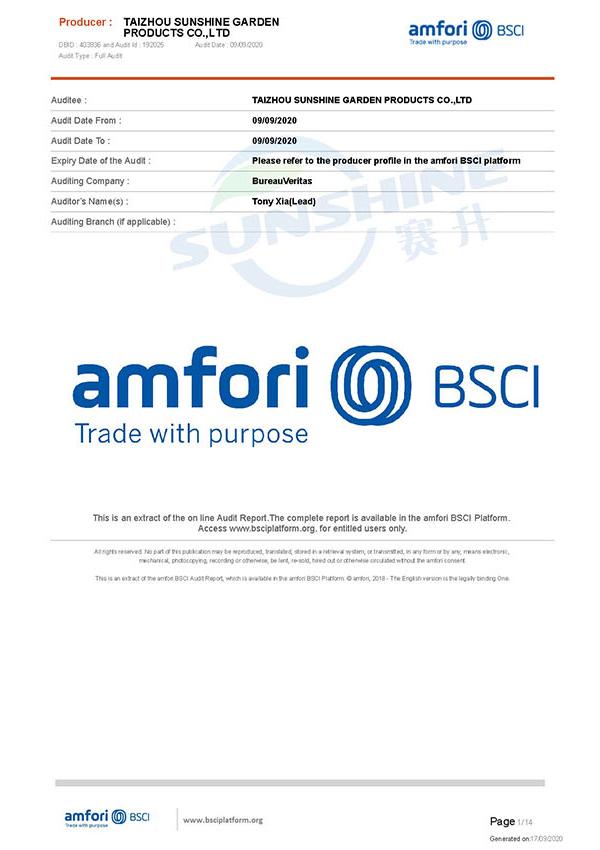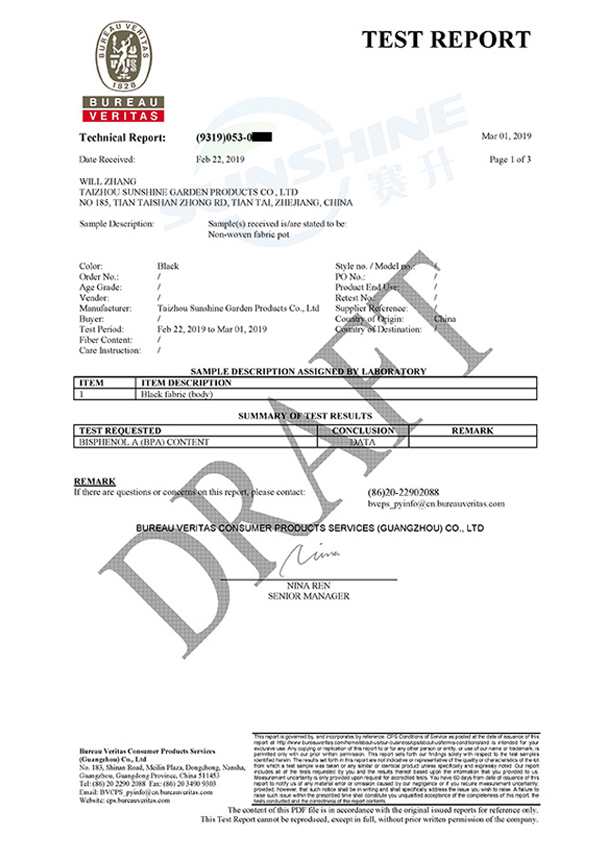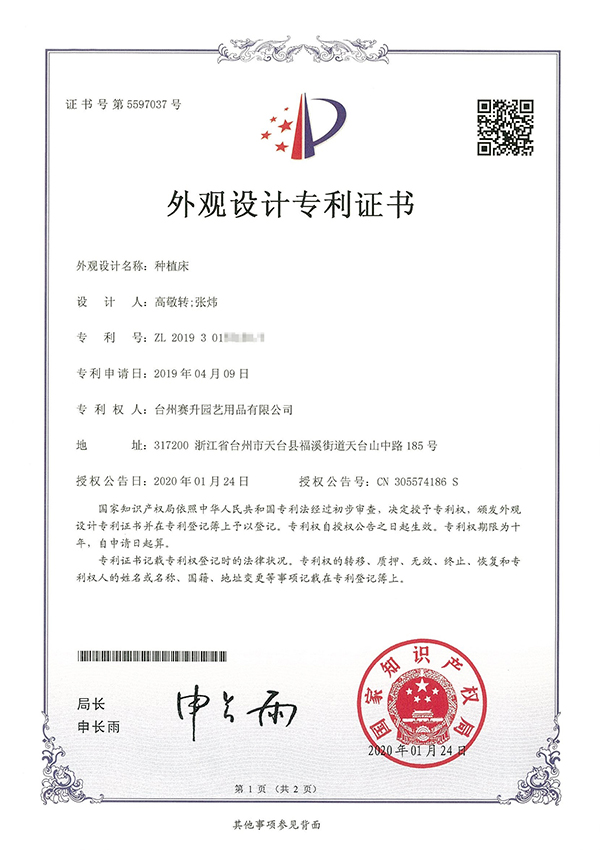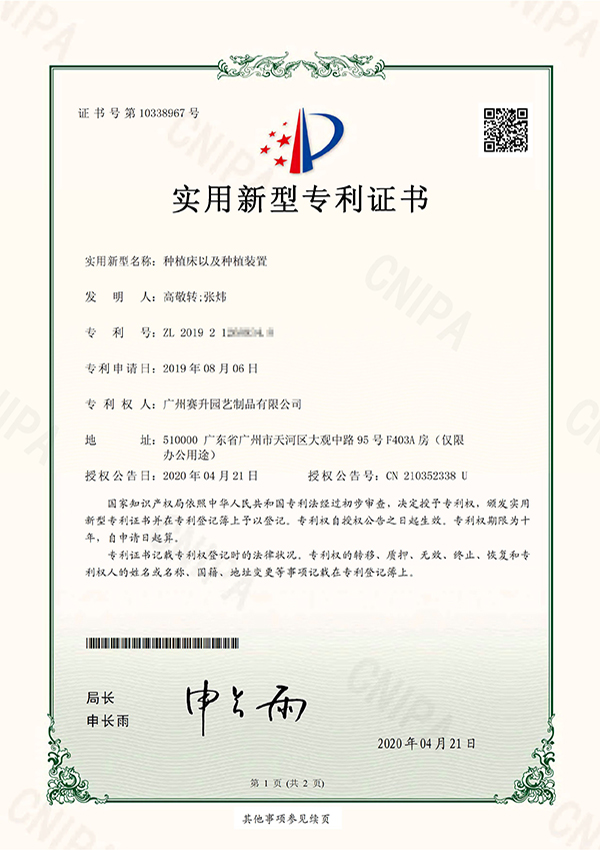* Provides a convenient base for building a plant support trellis.
* Easy to assemble.
* Helps maintain a beautiful and healthy garden.
* Eco-friendly felt fabric to replace wooden material garden bed.

|
Usage Condition |
FLOOR, Garden, Flower nursery production |
|
Style |
CLASSIC |
|
Used With |
Flower/Green Plant |
|
Commercial Buyer |
Drug Stores |
|
Season |
All-Season |
|
Design Style |
Modern |
|
Room Space Selection |
Not Support |
|
Occasion Selection |
Not Support |
|
Holiday Selection |
Not Support |
|
Place of Origin |
Guangdong, China |
|
Brand Name |
Sunshine Garden |
|
Model Number |
SG004W |
|
Material |
non woven fabric |
|
Finishing |
/ |
|
Type |
Flower Pot, Propagator Kits |
|
Product Name |
Garden Raised Bed |
|
Usage |
Gardening Plant |
|
Color |
Customized Color |
|
Shape |
Round / Square |
|
Size |
Customized |
|
MOQ |
200pcs |
|
Logo |
Customized Logo |
|
OEM |
Accpectable |
|
Packing |
Carton Box |
Offers everything you need to build complete gardening and hydroponic systems.
.jpg) CMH Lighting in Horticulture
The CMH Sodium Light has become increasingly popular in horticultural lighting due to its high efficiency, full-spectrum output, and plant growth benefits. Unlike traditional high-pressure sodium (HPS) or metal halide lamps, CMH lights offer a balanced spectrum that closely mimics natural sunlight. This feature makes them particularly suitable for indoor gardening, greenhouses, and controlled environment agriculture. Understanding their advantages helps growers optimize plant health, yield, and energy usage.
Full Spectrum and Balanced Light Output
One of the main advantages of CMH lighting is the broad and balanced spectrum it provides.
Natural Sunlight Simulation: CMH Sodium Light emits light across the visible spectrum, including wavelengths essential for photosynthesis and photomorphogenesis. This ensures healthy vegetative growth and vibrant flowering.
Improved Color Rendering: The high color rendering index (CRI) of CMH lights allows growers to better monitor plant health, identify nutrient deficiencies, and observe subtle growth changes that may not be visible under other light sources.
Optimized Plant Response: The inclusion of blue, red, and far-red light supports key developmental stages such as stem elongation, leaf expansion, and flowering initiation.
Energy Efficiency and Reduced Heat Output
Energy efficiency is a critical consideration in indoor horticulture, and CMH lighting offers tangible benefits.
Lower Energy Consumption: CMH Sodium Light produces more usable light per watt compared to traditional HPS lamps, reducing overall electricity costs.
Reduced Heat Stress: CMH lamps operate at lower temperatures while delivering high light intensity. This reduces the risk of heat stress to plants, allowing lights to be positioned closer to the canopy without burning leaves.
Compatibility with Smaller Spaces: Lower heat output also benefits smaller grow rooms where ventilation and cooling may be limited.
Enhanced Plant Growth and Yield
CMH lighting supports plant development at multiple growth stages.
Vegetative Growth: The spectrum supports compact, healthy foliage with strong chlorophyll production, promoting photosynthetic efficiency.
Flowering and Fruiting: CMH lights provide sufficient red and far-red wavelengths to stimulate robust flowering and fruiting, increasing overall yield and quality.
Stronger Plant Structure: Balanced light reduces stretch, promotes sturdy stems, and supports uniform growth, resulting in healthier, more resilient plants.
Longer Lamp Life and Durability
Durability and maintenance are important for commercial growers.
Extended Lifespan: CMH Sodium Light typically lasts longer than traditional metal halide lamps, reducing the frequency and cost of replacements.
Stable Light Output: CMH lamps maintain consistent intensity and spectrum throughout their lifespan, ensuring predictable growth outcomes.
Durable Construction: Many CMH lamps are constructed with ceramic arc tubes that withstand thermal stress, further enhancing longevity.
Practical Advantages for Growers
CMH lighting also offers operational and practical benefits for horticultural applications.
Flexible Application: Suitable for a wide variety of plants, including vegetables, herbs, ornamentals, and flowering crops.
Easy Integration: Compatible with existing ballasts and dimming systems designed for ceramic metal halide lamps.
Better Visual Inspection: The high CRI improves visual monitoring of plant health without relying solely on instruments or sensors.
The CMH Sodium Light offers numerous advantages for horticultural growers, including full-spectrum light, energy efficiency, reduced heat output, and enhanced plant growth. Its ability to support all growth stages, combined with longer lifespan and practical operational benefits, makes it a preferred choice for indoor gardening and greenhouse applications. By leveraging CMH lighting, growers can achieve higher yields, healthier plants, and more efficient energy usage, making it an invaluable tool in modern horticulture.
CMH Lighting in Horticulture
The CMH Sodium Light has become increasingly popular in horticultural lighting due to its high efficiency, full-spectrum output, and plant growth benefits. Unlike traditional high-pressure sodium (HPS) or metal halide lamps, CMH lights offer a balanced spectrum that closely mimics natural sunlight. This feature makes them particularly suitable for indoor gardening, greenhouses, and controlled environment agriculture. Understanding their advantages helps growers optimize plant health, yield, and energy usage.
Full Spectrum and Balanced Light Output
One of the main advantages of CMH lighting is the broad and balanced spectrum it provides.
Natural Sunlight Simulation: CMH Sodium Light emits light across the visible spectrum, including wavelengths essential for photosynthesis and photomorphogenesis. This ensures healthy vegetative growth and vibrant flowering.
Improved Color Rendering: The high color rendering index (CRI) of CMH lights allows growers to better monitor plant health, identify nutrient deficiencies, and observe subtle growth changes that may not be visible under other light sources.
Optimized Plant Response: The inclusion of blue, red, and far-red light supports key developmental stages such as stem elongation, leaf expansion, and flowering initiation.
Energy Efficiency and Reduced Heat Output
Energy efficiency is a critical consideration in indoor horticulture, and CMH lighting offers tangible benefits.
Lower Energy Consumption: CMH Sodium Light produces more usable light per watt compared to traditional HPS lamps, reducing overall electricity costs.
Reduced Heat Stress: CMH lamps operate at lower temperatures while delivering high light intensity. This reduces the risk of heat stress to plants, allowing lights to be positioned closer to the canopy without burning leaves.
Compatibility with Smaller Spaces: Lower heat output also benefits smaller grow rooms where ventilation and cooling may be limited.
Enhanced Plant Growth and Yield
CMH lighting supports plant development at multiple growth stages.
Vegetative Growth: The spectrum supports compact, healthy foliage with strong chlorophyll production, promoting photosynthetic efficiency.
Flowering and Fruiting: CMH lights provide sufficient red and far-red wavelengths to stimulate robust flowering and fruiting, increasing overall yield and quality.
Stronger Plant Structure: Balanced light reduces stretch, promotes sturdy stems, and supports uniform growth, resulting in healthier, more resilient plants.
Longer Lamp Life and Durability
Durability and maintenance are important for commercial growers.
Extended Lifespan: CMH Sodium Light typically lasts longer than traditional metal halide lamps, reducing the frequency and cost of replacements.
Stable Light Output: CMH lamps maintain consistent intensity and spectrum throughout their lifespan, ensuring predictable growth outcomes.
Durable Construction: Many CMH lamps are constructed with ceramic arc tubes that withstand thermal stress, further enhancing longevity.
Practical Advantages for Growers
CMH lighting also offers operational and practical benefits for horticultural applications.
Flexible Application: Suitable for a wide variety of plants, including vegetables, herbs, ornamentals, and flowering crops.
Easy Integration: Compatible with existing ballasts and dimming systems designed for ceramic metal halide lamps.
Better Visual Inspection: The high CRI improves visual monitoring of plant health without relying solely on instruments or sensors.
The CMH Sodium Light offers numerous advantages for horticultural growers, including full-spectrum light, energy efficiency, reduced heat output, and enhanced plant growth. Its ability to support all growth stages, combined with longer lifespan and practical operational benefits, makes it a preferred choice for indoor gardening and greenhouse applications. By leveraging CMH lighting, growers can achieve higher yields, healthier plants, and more efficient energy usage, making it an invaluable tool in modern horticulture.
.jpg) Why Surface Treatment Matters for Rolling Bench Longevity
The surface finish of a Rolling Bench is a critical factor in determining its lifespan, particularly in environments with high humidity, chemical exposure, or frequent cleaning. Proper surface treatment not only protects against corrosion but also maintains structural integrity over the years of use.
Corrosion Resistance: Untreated metal is prone to rust when exposed to moisture, fertilizers, or acidic residues, which can weaken the bench structure.
Wear and Abrasion Protection: Surface coatings reduce the effect of scratches, friction, and heavy loads, extending the functional lifespan.
Aesthetic Preservation: A well-treated surface retains its appearance over time, which is important in commercial or visible growing environments.
Galvanization: A Proven Method for Longevity
Galvanization, typically hot-dip or electro-galvanized, is one of the widely used treatments for metal benches.
Thick Zinc Layer Protection: Zinc acts as a sacrificial layer, corroding before the steel beneath is affected.
Durability in Humid Environments: Galvanized surfaces perform exceptionally well in greenhouses or outdoor conditions, resisting rust for many years.
Maintenance Reduction: Galvanized benches require minimal upkeep, reducing labor and replacement costs.
Limitations: Over time, scratches or deep abrasions can expose the steel, necessitating spot treatments to maintain protection.
Powder Coating: Enhanced Protection and Visual Appeal
Powder coating is another common treatment that offers both protective and aesthetic benefits.
Uniform Coverage: Unlike liquid paints, powder coatings provide a thicker, more uniform layer that adheres tightly to the metal surface.
Chemical Resistance: This finish resists many fertilizers, cleaning agents, and moisture, making it suitable for intensive agricultural applications.
Customizable Colors and Textures: Powder coating allows rolling benches to match specific color schemes or branding needs.
Potential Drawbacks: While resistant to corrosion, powder coatings can chip or scratch, particularly in high-traffic or heavy-load applications, which may require periodic touch-ups.
Comparing Surface Treatments: Galvanization vs. Powder Coating
Choosing between galvanization and powder coating depends on the intended use and environmental conditions.
Galvanization Strengths: Offers long-term corrosion resistance and minimal maintenance in wet or humid settings.
Powder Coating Strengths: Provides enhanced chemical resistance, aesthetic flexibility, and an extra protective layer over galvanized steel.
Combined Approaches: Some rolling benches employ galvanization followed by powder coating for protection, extending service life in harsh environments.
Impact of Surface Treatment on Overall Rolling Bench Performance
Proper surface finishing not only improves durability but also enhances operational performance.
Load Capacity Retention: Treated surfaces maintain structural integrity, ensuring that the bench can safely carry its rated load without weakening over time.
Smooth Operation: Corrosion-free surfaces prevent roughness that can interfere with sliding rails or rolling mechanisms.
Reduced Replacement Frequency: By extending lifespan, surface treatments reduce the frequency of repairs or replacements, saving cost and downtime.
Safety Considerations: Rust or flaking surfaces can create sharp edges or weak points, so treatment also improves operator safety.
Selecting the Right Surface Treatment
The surface treatment of a Rolling Bench significantly affects its durability, maintenance requirements, and overall performance. Galvanization provides robust protection against moisture and corrosion, while powder coating adds chemical resistance and visual appeal. For environments with heavy use, high humidity, or exposure to fertilizers, combining these treatments can optimize lifespan. Choosing the right finish ensures that the rolling bench remains reliable, safe, and efficient over many years of service.
Why Surface Treatment Matters for Rolling Bench Longevity
The surface finish of a Rolling Bench is a critical factor in determining its lifespan, particularly in environments with high humidity, chemical exposure, or frequent cleaning. Proper surface treatment not only protects against corrosion but also maintains structural integrity over the years of use.
Corrosion Resistance: Untreated metal is prone to rust when exposed to moisture, fertilizers, or acidic residues, which can weaken the bench structure.
Wear and Abrasion Protection: Surface coatings reduce the effect of scratches, friction, and heavy loads, extending the functional lifespan.
Aesthetic Preservation: A well-treated surface retains its appearance over time, which is important in commercial or visible growing environments.
Galvanization: A Proven Method for Longevity
Galvanization, typically hot-dip or electro-galvanized, is one of the widely used treatments for metal benches.
Thick Zinc Layer Protection: Zinc acts as a sacrificial layer, corroding before the steel beneath is affected.
Durability in Humid Environments: Galvanized surfaces perform exceptionally well in greenhouses or outdoor conditions, resisting rust for many years.
Maintenance Reduction: Galvanized benches require minimal upkeep, reducing labor and replacement costs.
Limitations: Over time, scratches or deep abrasions can expose the steel, necessitating spot treatments to maintain protection.
Powder Coating: Enhanced Protection and Visual Appeal
Powder coating is another common treatment that offers both protective and aesthetic benefits.
Uniform Coverage: Unlike liquid paints, powder coatings provide a thicker, more uniform layer that adheres tightly to the metal surface.
Chemical Resistance: This finish resists many fertilizers, cleaning agents, and moisture, making it suitable for intensive agricultural applications.
Customizable Colors and Textures: Powder coating allows rolling benches to match specific color schemes or branding needs.
Potential Drawbacks: While resistant to corrosion, powder coatings can chip or scratch, particularly in high-traffic or heavy-load applications, which may require periodic touch-ups.
Comparing Surface Treatments: Galvanization vs. Powder Coating
Choosing between galvanization and powder coating depends on the intended use and environmental conditions.
Galvanization Strengths: Offers long-term corrosion resistance and minimal maintenance in wet or humid settings.
Powder Coating Strengths: Provides enhanced chemical resistance, aesthetic flexibility, and an extra protective layer over galvanized steel.
Combined Approaches: Some rolling benches employ galvanization followed by powder coating for protection, extending service life in harsh environments.
Impact of Surface Treatment on Overall Rolling Bench Performance
Proper surface finishing not only improves durability but also enhances operational performance.
Load Capacity Retention: Treated surfaces maintain structural integrity, ensuring that the bench can safely carry its rated load without weakening over time.
Smooth Operation: Corrosion-free surfaces prevent roughness that can interfere with sliding rails or rolling mechanisms.
Reduced Replacement Frequency: By extending lifespan, surface treatments reduce the frequency of repairs or replacements, saving cost and downtime.
Safety Considerations: Rust or flaking surfaces can create sharp edges or weak points, so treatment also improves operator safety.
Selecting the Right Surface Treatment
The surface treatment of a Rolling Bench significantly affects its durability, maintenance requirements, and overall performance. Galvanization provides robust protection against moisture and corrosion, while powder coating adds chemical resistance and visual appeal. For environments with heavy use, high humidity, or exposure to fertilizers, combining these treatments can optimize lifespan. Choosing the right finish ensures that the rolling bench remains reliable, safe, and efficient over many years of service.
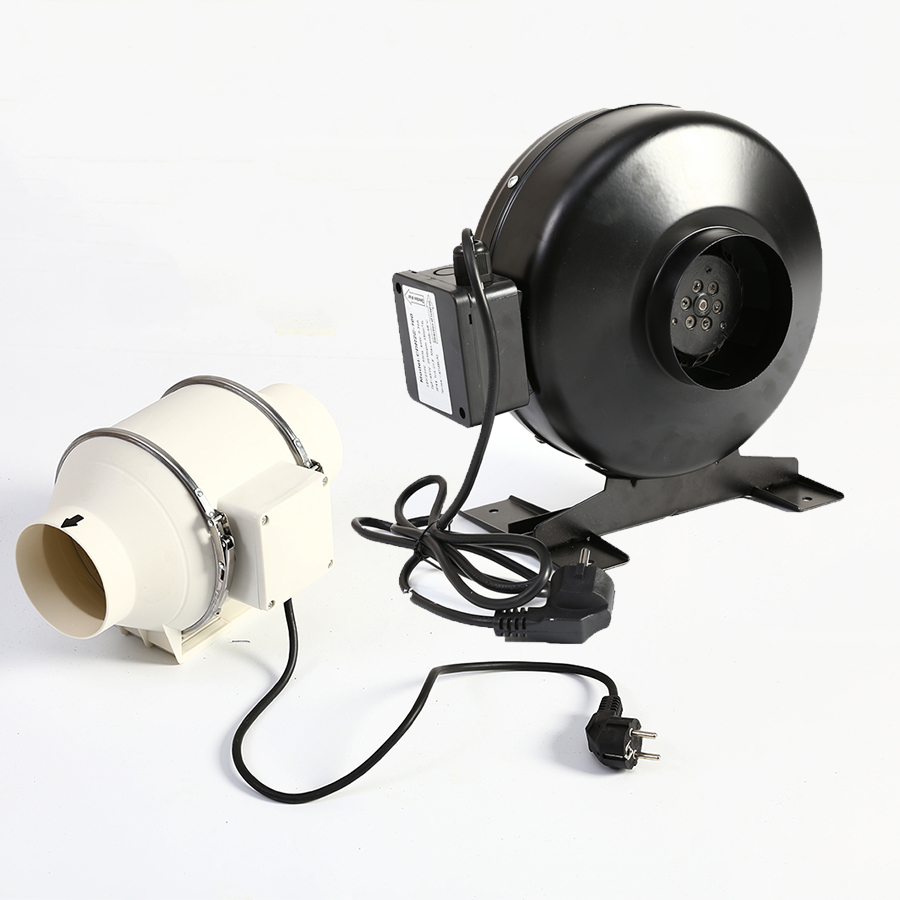 How Do Grow Tent Kit Accessories Influence Light Utilization?
Within the range of Grow Tent Kit Accessories, the reflective liner plays a central role in determining how efficiently plants receive usable light.
Improving Light Reflection: Reflective liners redirect photons that would otherwise be lost on the tent walls, improving overall illumination.
Reducing Illumination Gaps: By bouncing light back toward the canopy, these liners help reduce dark zones and create a more uniform light field.
Supporting Energy Efficiency: Higher reflectivity means growers can achieve stronger light exposure without increasing lamp wattage.
Why Is Reflectivity Critical for Enhancing Photosynthetic Performance?
Reflectivity directly impacts photosynthetic activity because indoor plants rely solely on artificial light sources.
Increasing PAR Availability: High-reflection surfaces ensure that plants receive more photons in the photosynthetically active radiation (PAR) range, strengthening metabolic processes.
Boosting Chlorophyll Activation: Uniform light distribution prevents light-starvation on lower leaves, enabling consistent chlorophyll activity across the canopy.
Improving Light Penetration: The more photons that bounce around the tent, the more deeply light penetrates dense foliage layers.
How Much Growth Difference Can Reflective Liners Create?
Variations in liner reflectivity can produce significant differences in growth speed and overall plant development.
High-Reflective Liners (90–98%): Tents with premium Mylar or diamond-textured liners often support 10–25% faster vegetative growth due to higher light recycling.
Mid-Level Reflective Liners (70–85%): These offer noticeable but moderate improvements; growth tends to be steady but may show uneven canopy development.
Low-Reflective Materials (<70%): Plants may suffer from slower development, elongated stems, and shading issues as large portions of light are lost to absorption.
How Does Reflectivity Affect Canopy Uniformity and Plant Structure?
The consistency of light within the growing environment shapes how evenly plants develop.
Promoting Balanced Canopy Height: With better light distribution, all plants grow at similar rates, reducing the risk of one side of the tent becoming taller than the other.
Enhancing Lateral Growth: High-reflectivity surfaces encourage plants to produce broader, fuller structures rather than stretching toward the light source.
Improving Density and Branch Strength: Uniform illumination strengthens secondary branches and leaves throughout the plant, not just at the top.
How Do Reflective Liners Influence Temperature and Microclimate Stability?
Reflective liners affect more than just light—they also shape the growing microenvironment.
Reducing Heat Absorption: High-reflective materials absorb less heat, helping stabilize temperature and preventing hotspots beneath strong grow lights.
Maintaining Predictable Humidity Levels: Balanced temperatures reduce sudden humidity spikes, lowering risks such as mold growth.
Improving Ventilation Efficiency: Less heat accumulation decreases the workload on ventilation fans and filtration systems.
Do Higher Reflectivity Liners Always Provide the Results?
While high-reflectivity liners generally improve growth conditions, the level of benefit depends on tent size and growing goals.
Small Grow Tents Benefit Significantly: Since space is limited, every photon counts; reflectivity improvements show immediate results.
Large Tents See Cumulative Gains: Although individual improvements may seem small, the combined effect across a larger area can cause substantial yield increases.
Cost-to-Value Consideration: Upgrading reflectivity is often cost-effective, as better light utilization can reduce energy consumption over time.
To What Extent Does Reflectivity Change Growth Speed?
When comparing low- and high-reflective liners, measurable growth differences consistently appear.
Faster Vegetative Development: Plants typically grow 10–25% faster in highly reflective tents due to increased photon exposure.
Stronger Flowering Response: Greater reflected light enhances flower density, sugar production, and overall yield.
Long-Term Growth Stability: Higher reflectivity helps maintain consistent growth cycles across multiple harvests.
How Do Grow Tent Kit Accessories Influence Light Utilization?
Within the range of Grow Tent Kit Accessories, the reflective liner plays a central role in determining how efficiently plants receive usable light.
Improving Light Reflection: Reflective liners redirect photons that would otherwise be lost on the tent walls, improving overall illumination.
Reducing Illumination Gaps: By bouncing light back toward the canopy, these liners help reduce dark zones and create a more uniform light field.
Supporting Energy Efficiency: Higher reflectivity means growers can achieve stronger light exposure without increasing lamp wattage.
Why Is Reflectivity Critical for Enhancing Photosynthetic Performance?
Reflectivity directly impacts photosynthetic activity because indoor plants rely solely on artificial light sources.
Increasing PAR Availability: High-reflection surfaces ensure that plants receive more photons in the photosynthetically active radiation (PAR) range, strengthening metabolic processes.
Boosting Chlorophyll Activation: Uniform light distribution prevents light-starvation on lower leaves, enabling consistent chlorophyll activity across the canopy.
Improving Light Penetration: The more photons that bounce around the tent, the more deeply light penetrates dense foliage layers.
How Much Growth Difference Can Reflective Liners Create?
Variations in liner reflectivity can produce significant differences in growth speed and overall plant development.
High-Reflective Liners (90–98%): Tents with premium Mylar or diamond-textured liners often support 10–25% faster vegetative growth due to higher light recycling.
Mid-Level Reflective Liners (70–85%): These offer noticeable but moderate improvements; growth tends to be steady but may show uneven canopy development.
Low-Reflective Materials (<70%): Plants may suffer from slower development, elongated stems, and shading issues as large portions of light are lost to absorption.
How Does Reflectivity Affect Canopy Uniformity and Plant Structure?
The consistency of light within the growing environment shapes how evenly plants develop.
Promoting Balanced Canopy Height: With better light distribution, all plants grow at similar rates, reducing the risk of one side of the tent becoming taller than the other.
Enhancing Lateral Growth: High-reflectivity surfaces encourage plants to produce broader, fuller structures rather than stretching toward the light source.
Improving Density and Branch Strength: Uniform illumination strengthens secondary branches and leaves throughout the plant, not just at the top.
How Do Reflective Liners Influence Temperature and Microclimate Stability?
Reflective liners affect more than just light—they also shape the growing microenvironment.
Reducing Heat Absorption: High-reflective materials absorb less heat, helping stabilize temperature and preventing hotspots beneath strong grow lights.
Maintaining Predictable Humidity Levels: Balanced temperatures reduce sudden humidity spikes, lowering risks such as mold growth.
Improving Ventilation Efficiency: Less heat accumulation decreases the workload on ventilation fans and filtration systems.
Do Higher Reflectivity Liners Always Provide the Results?
While high-reflectivity liners generally improve growth conditions, the level of benefit depends on tent size and growing goals.
Small Grow Tents Benefit Significantly: Since space is limited, every photon counts; reflectivity improvements show immediate results.
Large Tents See Cumulative Gains: Although individual improvements may seem small, the combined effect across a larger area can cause substantial yield increases.
Cost-to-Value Consideration: Upgrading reflectivity is often cost-effective, as better light utilization can reduce energy consumption over time.
To What Extent Does Reflectivity Change Growth Speed?
When comparing low- and high-reflective liners, measurable growth differences consistently appear.
Faster Vegetative Development: Plants typically grow 10–25% faster in highly reflective tents due to increased photon exposure.
Stronger Flowering Response: Greater reflected light enhances flower density, sugar production, and overall yield.
Long-Term Growth Stability: Higher reflectivity helps maintain consistent growth cycles across multiple harvests.
-1.jpg) Why Edge Height Matters in a Rolling Tray
The edge height of a Rolling Tray plays a surprisingly important role in how easily and efficiently users can organize materials such as loose tobacco, herbs, or rolling papers.
A well-designed edge prevents materials from spilling over the sides, reducing waste and keeping the workspace clean.
The height also affects hand movement: shallower edges support quick scooping and spreading, while deeper edges can restrict motion but increase containment.
Users who frequently multitask during preparation tend to prefer trays that keep materials securely inside without constant attention.
Because rolling habits vary widely, understanding how different edge heights influence workflow helps users select a tray that matches their usage style.
Benefits and Limitations of Low-Edge Trays
Low-edge trays are typically designed with an edge height of only a few millimeters to a centimeter.
These trays are ideal for fast, fluid rolling motions because the fingers can move across the surface without obstruction.
They excel in controlled indoor environments where airflow is stable, and the risk of materials blowing away is minimal.
Their minimal walls make them good for users who prioritize speed and tactile control over containment.
However, low edges may not provide adequate protection for beginners or for users working with finely ground materials that tend to scatter easily.
Advantages of Medium-Edge Trays for Everyday Use
Medium-edge trays strike a balance between mobility and containment, making them the versatile option for general rolling tasks.
Typically 1–2 centimeters in height, the edges prevent accidental loss of material while still allowing comfortable hand motions.
These trays work well in living rooms, lounges, or shared spaces where slight movements or airflow may disturb the materials.
The moderate walls also help users funnel leftover tobacco or herbs back into a storage container without spilling.
This edge height is preferred by users who want reliability without sacrificing the simplicity and speed of rolling.
High-Edge Trays for Containment
High-edge trays are designed with taller walls that provide good protection and organization during preparation.
They reduce the risk of spillage, especially for beginners or those working with fluffy blends that scatter easily.
These trays are ideal for outdoor use, including parks, patios, and windy environments where loose material can easily be lost.
The deeper edges help keep tools—such as filters, small containers, or rolling papers—in one place rather than sliding off the tray.
The trade-off is reduced hand freedom, making them slower to work with if speed is a priority.
Matching Edge Height to Specific Scenarios
Different situations require trays with different levels of containment, mobility, and accessibility.
Indoor, calm environments benefit from low to medium edges, as the preparation process is controlled and efficient.
Outdoor or mobile settings require medium to high edges to prevent scattering or loss.
Users with limited workspace may also prefer higher edges to keep all components compactly contained.
Those who value aesthetics or minimalist design may gravitate toward low-edge trays, while practicality-focused users often choose medium or high designs.
The edge height of a rolling surface has a direct influence on efficiency, movement, material retention, and overall ease of use. By understanding the strengths and limitations of each height category—low, medium, and high—users can select a tray that enhances their rolling experience in any environment.
Why Edge Height Matters in a Rolling Tray
The edge height of a Rolling Tray plays a surprisingly important role in how easily and efficiently users can organize materials such as loose tobacco, herbs, or rolling papers.
A well-designed edge prevents materials from spilling over the sides, reducing waste and keeping the workspace clean.
The height also affects hand movement: shallower edges support quick scooping and spreading, while deeper edges can restrict motion but increase containment.
Users who frequently multitask during preparation tend to prefer trays that keep materials securely inside without constant attention.
Because rolling habits vary widely, understanding how different edge heights influence workflow helps users select a tray that matches their usage style.
Benefits and Limitations of Low-Edge Trays
Low-edge trays are typically designed with an edge height of only a few millimeters to a centimeter.
These trays are ideal for fast, fluid rolling motions because the fingers can move across the surface without obstruction.
They excel in controlled indoor environments where airflow is stable, and the risk of materials blowing away is minimal.
Their minimal walls make them good for users who prioritize speed and tactile control over containment.
However, low edges may not provide adequate protection for beginners or for users working with finely ground materials that tend to scatter easily.
Advantages of Medium-Edge Trays for Everyday Use
Medium-edge trays strike a balance between mobility and containment, making them the versatile option for general rolling tasks.
Typically 1–2 centimeters in height, the edges prevent accidental loss of material while still allowing comfortable hand motions.
These trays work well in living rooms, lounges, or shared spaces where slight movements or airflow may disturb the materials.
The moderate walls also help users funnel leftover tobacco or herbs back into a storage container without spilling.
This edge height is preferred by users who want reliability without sacrificing the simplicity and speed of rolling.
High-Edge Trays for Containment
High-edge trays are designed with taller walls that provide good protection and organization during preparation.
They reduce the risk of spillage, especially for beginners or those working with fluffy blends that scatter easily.
These trays are ideal for outdoor use, including parks, patios, and windy environments where loose material can easily be lost.
The deeper edges help keep tools—such as filters, small containers, or rolling papers—in one place rather than sliding off the tray.
The trade-off is reduced hand freedom, making them slower to work with if speed is a priority.
Matching Edge Height to Specific Scenarios
Different situations require trays with different levels of containment, mobility, and accessibility.
Indoor, calm environments benefit from low to medium edges, as the preparation process is controlled and efficient.
Outdoor or mobile settings require medium to high edges to prevent scattering or loss.
Users with limited workspace may also prefer higher edges to keep all components compactly contained.
Those who value aesthetics or minimalist design may gravitate toward low-edge trays, while practicality-focused users often choose medium or high designs.
The edge height of a rolling surface has a direct influence on efficiency, movement, material retention, and overall ease of use. By understanding the strengths and limitations of each height category—low, medium, and high—users can select a tray that enhances their rolling experience in any environment.
.jpg?imageView2/2/w/800/h/800/format/webp/q/75)
-1.jpg?imageView2/2/w/800/h/800/format/webp/q/75)
.jpg?imageView2/2/w/800/h/800/format/webp/q/75)
Features: 1. Made of environment friendly non woven fabric, allow roots breathable and healthier. 2....
.jpg?imageView2/2/w/800/h/800/format/webp/q/75)
Features:1) Made of environment friendly non woven fabric, allow roots breathable and healthier.2) B...
.jpg?imageView2/2/w/800/h/800/format/webp/q/75)
Features: 1) Made of environment friendly non woven fabric, allow roots breathable and healthier. 2)...
.jpg?imageView2/2/w/800/h/800/format/webp/q/75)
Features:1) Made of environment friendly non woven fabric, allow roots breathable and healthier.2) B...
.jpg?imageView2/2/w/800/h/800/format/webp/q/75)
Features: 1) Made of environment friendly non woven fabric, allow roots breathable and healthier. 2)...
.jpg?imageView2/2/w/800/h/800/format/webp/q/75)
Features: 1) Made of environment friendly non woven fabric, allow roots breathable and healthier. 2)...
.jpg?imageView2/2/w/800/h/800/format/webp/q/75)
Features:1) Made of environment friendly non woven fabric, allow roots breathable and healthier.2) B...
.jpg?imageView2/2/w/800/h/800/format/webp/q/75)
Features:1) Made of environment friendly non woven fabric, allow roots breathable and healthier.2) B...


 Innovation Team
Innovation Team Patented Technology
Patented Technology Quality Assurance
Quality Assurance Efficient Response
Efficient Response.jpg)

